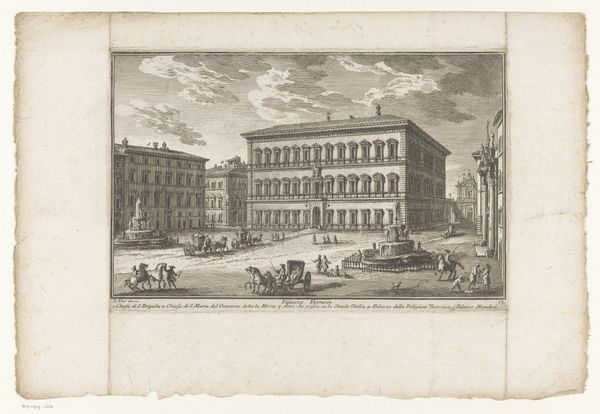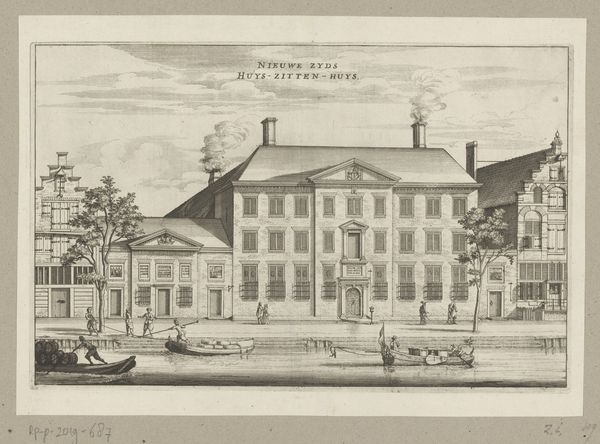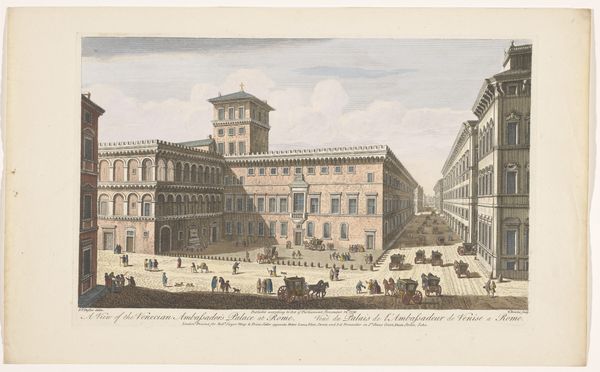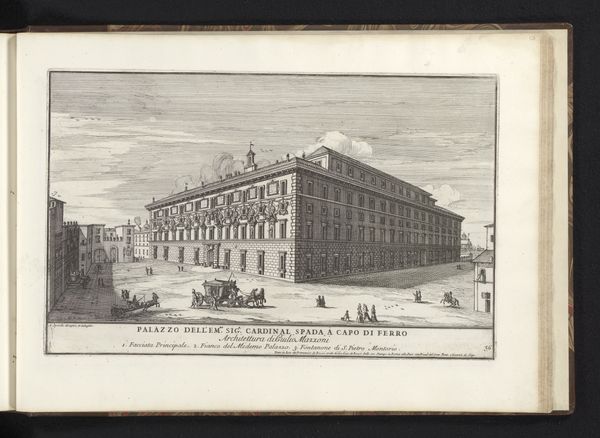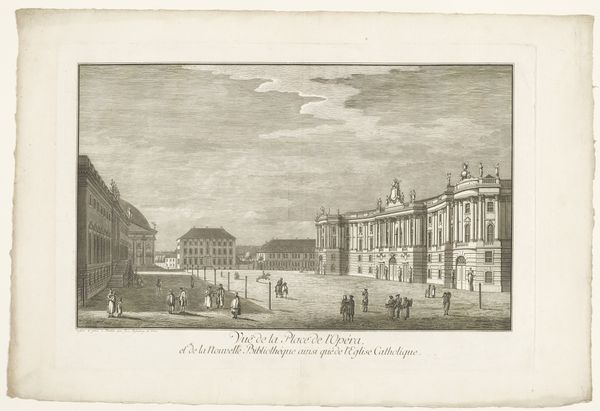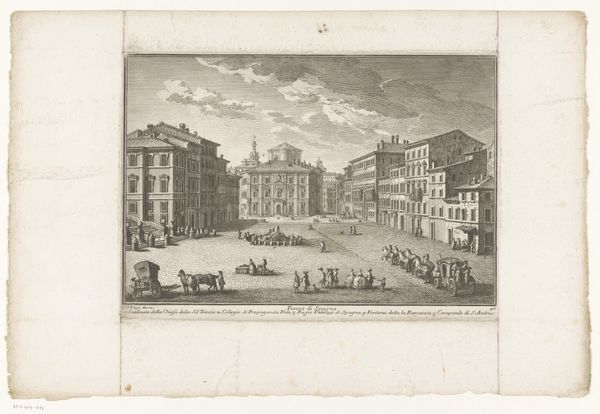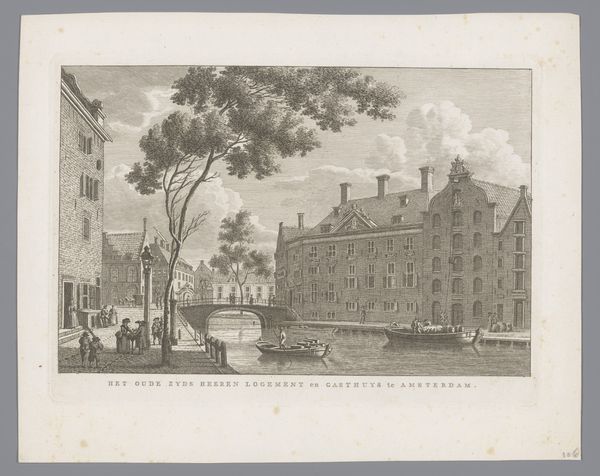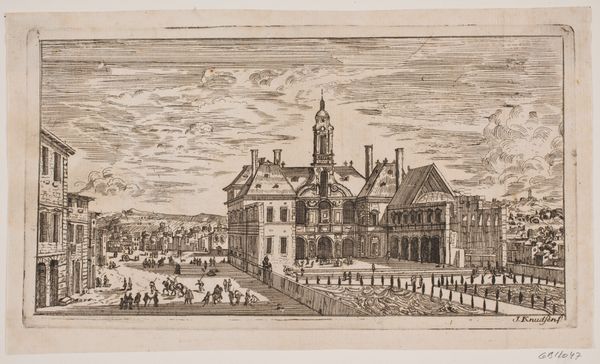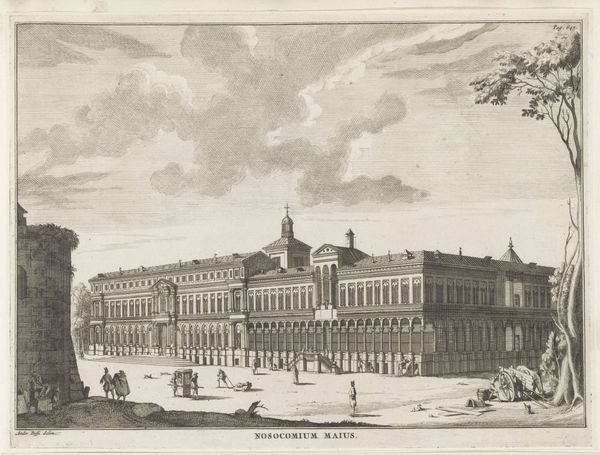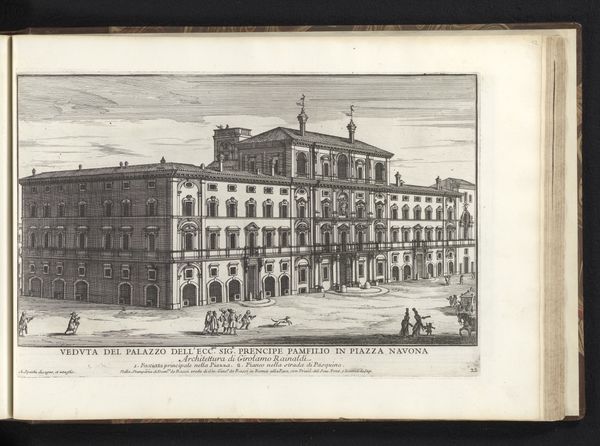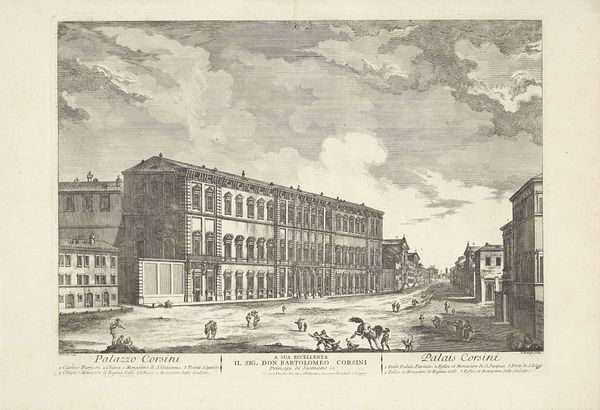
drawing, engraving, architecture
#
drawing
#
dutch-golden-age
#
perspective
#
cityscape
#
engraving
#
architecture
Dimensions: height 195 mm, width 301 mm
Copyright: Rijks Museum: Open Domain
Curator: Immediately, what strikes me is the composition. The courtyard pulls your eye deep into the space. It's somewhat austere, yet ordered. Editor: Indeed. What we’re looking at is an engraving by Jacob van Meurs, dating back to 1663. It’s titled "View of the Girls' Orphanage of the Amsterdam Civic Orphanage." It provides a meticulously detailed depiction of the institution, employing striking perspective to enhance its spatial depth. Curator: I'm drawn to how the repetitive architectural elements highlight the systemic nature of this institution. It almost feels like a textile, where similar shapes are woven to make something whole. I wonder, what was the process behind creating such a precise rendering using engraving? Editor: Engraving involved meticulous labor. The image was incised onto a metal plate, likely copper. That plate was then inked, and pressed onto paper. Given the social context, this print served various purposes. It was certainly intended to document Amsterdam's civic responsibility for caring for its orphaned girls. But prints like this also had commercial value, showcasing the city's wealth and order for domestic and international markets. Curator: Do you think the way in which perspective has been deployed shapes public perception of the orphanage? Its calculated depth perhaps enhances a sense of civic grandeur… the idea of a carefully planned and morally sound social structure. Editor: Exactly. This print wasn’t just about information; it was about crafting an image of benevolent authority. The formal garden in the middle and orderly distribution of people reinforce those ideas. It highlights the Dutch Republic’s commitment to both its citizens and its reputation. It suggests care and regulation, a powerful statement about the role of the state. Curator: It’s compelling to consider how this material artifact, produced through a specific labor-intensive process, was instrumental in constructing and circulating a particular ideological view of social care. Editor: And how that carefully constructed image speaks volumes about the public's understanding of its role within this historical framework. So much captured in one expertly rendered scene.
Comments
No comments
Be the first to comment and join the conversation on the ultimate creative platform.
